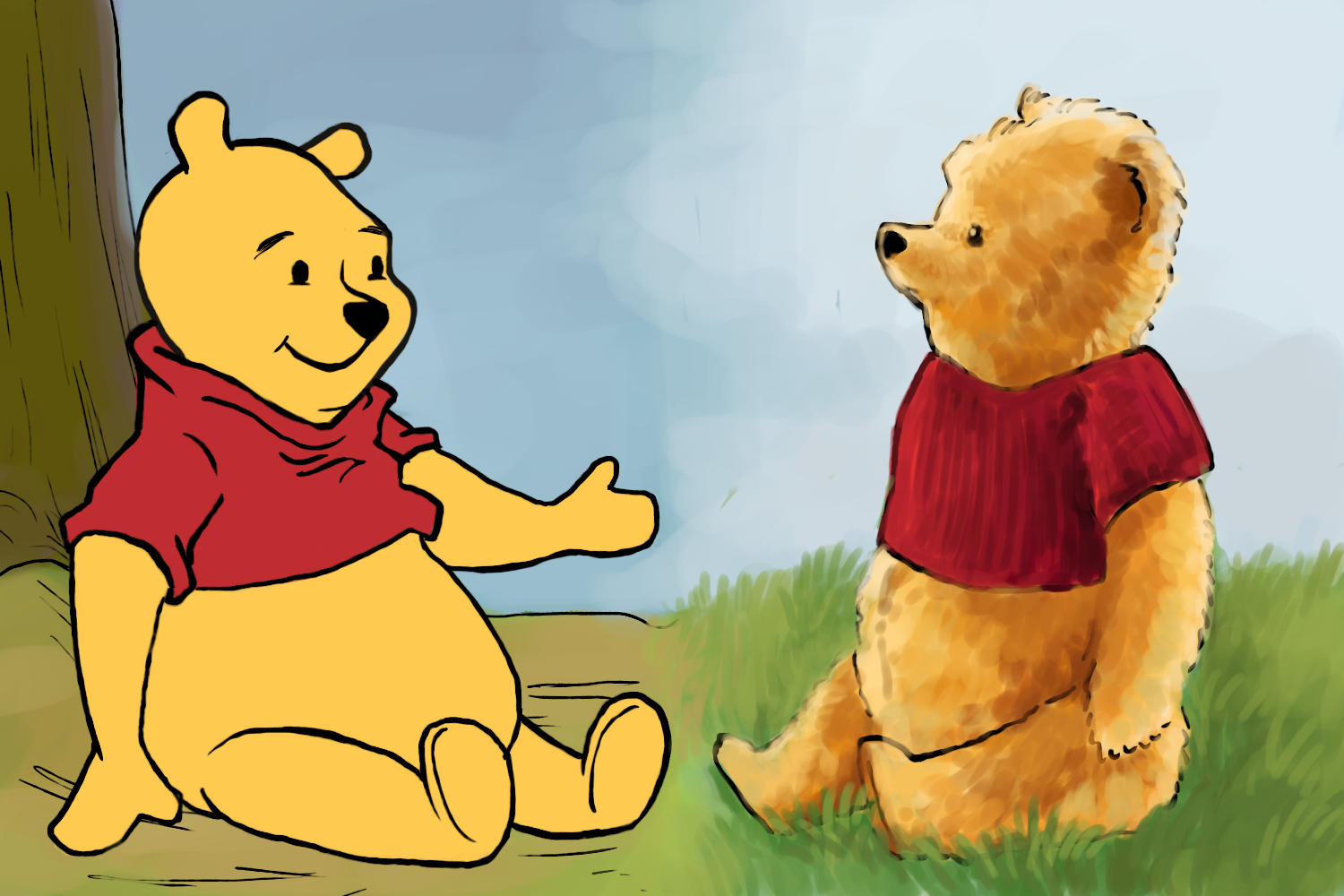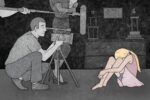“Some people care too much. I think it’s called love.” These are the simple, yet profound words spoken by everyone’s most beloved bear, Winnie-the-Pooh. It has been almost a century since author A. A. Milne wrote the first of the Pooh stories in 1926, based on his son Christopher Robin and his favorite stuffed teddy bear. Over 90 years later, Pooh remains in everyone’s hearts and will continue to do so.
The soon-to be-released “Christopher Robin,” starring Ewan McGregor, will be the newest cinematic addition to the Winnie-the-Pooh franchise. Here, in a rather tumultuous 2018, it might seem out of place for an innocent, nostalgic classic to return to theaters. Nowadays, it tends to feel like the imaginative kid-like spirit every human being has inside them has given way to stress and anger, all justifiably so. However, what Pooh brings to the world is what he’s brought to the world since the Great War: a feeling of comfort.
Comfort is a not a feeling unique to Winnie-the-Pooh, but it is the driving force of the entire franchise. In its long, long time of existence, the character, has never really done anything too wild. The stories that the world’s children, their children and their children’s children have read repeatedly are stories about the simple joys that come with youth, imagination and friendship. Pooh’s biggest adventures include singing about being a rain cloud, dealing with angry honey bees and bumbling his way through the Hundred Acre Wood.
The simplistic nature of Winnie-the-Pooh is further expressed in the uncomplicated illustrations done by E. H. Shepard. Shepard’s work, also featured in the children’s classic, “The Wind in the Willows,” relied on only a few lines and dots to create his instantly recognizable style.
The focus on a non-overwhelming, subdued backdrop for the lovely little stories served as a stark contrast to real life, a time when the world had been rocked from war and anguish. Milne and Shepard, both war veterans, brought something completely unexpected, and people cherished it. Winnie-the-Pooh was an escape into innocence, for children and adults alike.
Additionally, the simplicity of the plot lines and illustrations let shine the ability for readers to find solace in the deep relatability of Christopher, Pooh and his friends. Whether it’s 1926 or 2018, every person on Earth knows a naive Pooh Bear, a neurotic Piglet, a hyperactive Tigger, a grumpy Rabbit, a motherly Kanga, a narcissistic Owl and a depressed Eeyore.
To children, these characters seem like funny, dynamic personalities that bounce off each other effortlessly. Each is loved for their own individual reasons. As readers grow up, they begin to realize why Tigger or Eeyore was always their favorite. They can see themselves in the literary animal friends they grew up with.
The only human in the stories, Christopher Robin, was in many ways a mirror image of the children and adults reading about him. Jane Riordan, the author of “Winnie-the-Pooh Meets the Queen,” describes as “A small boy in a world without adults. His companions are his toys who talk and walk and occasionally fall in streams. Just like them, he was a little person who struggled with his letters and numbers and who embarked on bold adventures before dragging his favourite bear up to bed.”
In a time that was blanketed with hurt, the character of Christopher Robin was an unexpected breath of fresh air. After being surrounded by people who seemed to have lost their innocence, Christopher brought readers back to a time of pure, wholesome youth. It was as much a delight to the parents who read the stories as it was to the children that heard them.
Furthermore, the character of Christopher echoed a universal experience felt by all people: growing up. Christopher — like many children his age — found his closest and most rewarding friendships in the ones created inside his mind. He made silly mistakes and learned thoughtful lessons, all with the help of his loyal imaginary friends. However, Christopher eventually realizes in Milne’s “The House at Pooh Corner” that he must leave the Hundred Acre Wood, for he is maturing. It’s difficult to comprehend that everyone must eventually move on and that the things held most dear have to be let go, though never forgotten.
I have complete faith that come Aug. 3, all the theaters across the nation will be packed with people of all ages for the release date of “Christopher Robin.” When “Winnie the Pooh” hit theaters in 2011, I was in middle school, and I eagerly went and saw that movie during the opening weekend, giddy with excitement. Everyone loves Pooh and that’s partly because he’s super cute, but it’s mostly because he’s the friend that never left. This sentiment and A. A. Milne’s most poignant, bittersweet theme is echoed in the closing statements of “The House at Pooh Corner.”
“Wherever they go, and whatever happens to them on the way, in that enchanted place on the top of the Forest, a little boy and his Bear will always be playing.”

















